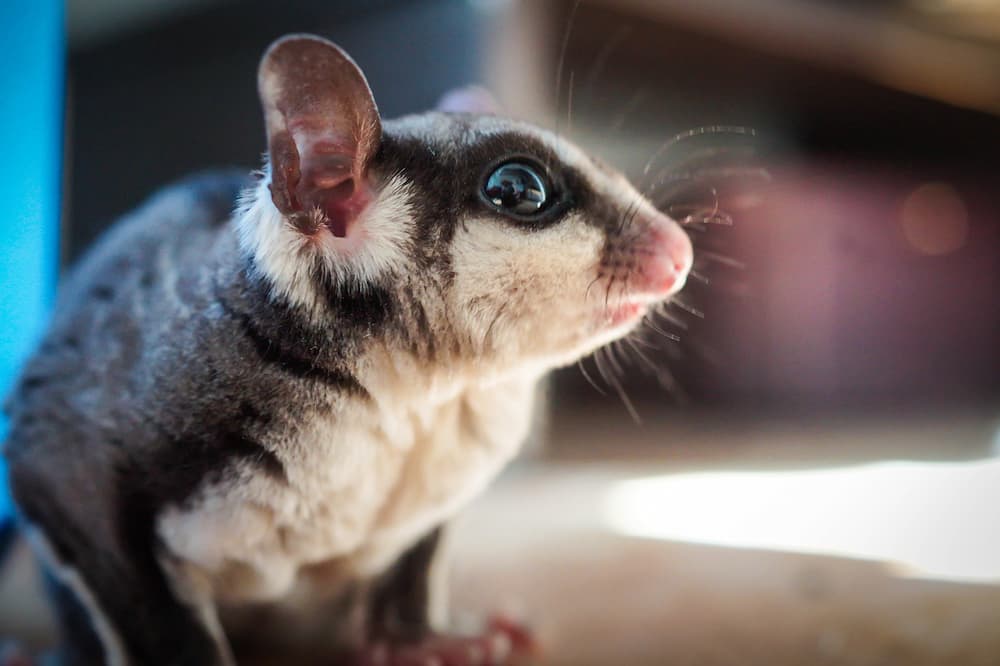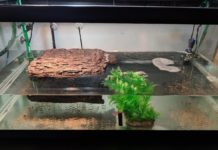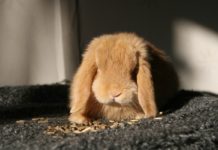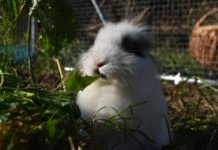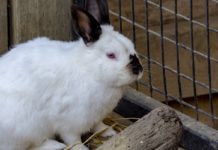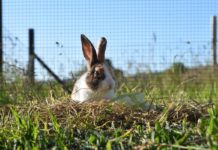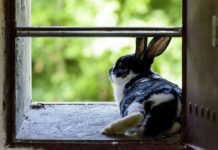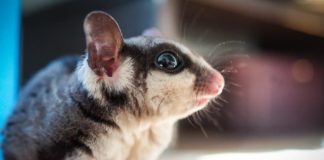If your sugar glider is sneezing, it’s normal to assume that they have a cold, however, sugar gliders aren’t susceptible to either colds or the flu. They can get similar illnesses, and that’s often caused by their surrounding environment.
While a sugar glider that’s sneezing may be awfully cute, and it can be, there could be serious health issues behind their little noise.
When your sugar glider is sneezing, it could be a sign of either an upper respiratory infection or an allergy. Just like with their owners, sugar gliders are susceptible to a number of different allergies, so you may have introduced something to them and not realized it was an allergen.
Reasons Why Your Sugar Glider Is Sneezing A Lot
What’s In Their Enclosure?
There are a few items that sugar gliders may have in their enclosure for added comfort and sanitary purposes, but those items could cause an allergic reaction. If your sugar glider is sneezing, take a careful look at everything in its enclosure to determine what could cause the allergen.
If there’s a towel or blanket in their enclosure, try removing it or switching to a less harsh detergent to see if this curbs the sneezing. Avoiding fabric softener may also help.
Foods And Treats
Food and treats can also be the culprit. If you have introduced a new type of food or even a different brand, the new food could be what’s causing the problem. It’s common to try different treats for a sugar glider every so often, and a new treat may be the problem.
If you haven’t changed the food, your sugar glider may have developed an allergy to one ingredient in it. Try to feed the sugar glider one type of food at a time and add another as you see that it’s not causing their sneezing. Over a few days, you might discover whether it’s one of the foods that’s causing the problem.
Cleaning The Enclosure
Pay close attention to what you use when cleaning your sugar glider’s enclosure. Although it can be helpful for controlling bacteria, it can be made from harsh chemicals that can cause sneezing and coughing. Instead, consider using water and scrubbing the area clean rather than using any harsh substances on it. If this doesn’t work, consider a mild, unscented soap to help you get it clean.
Outside The Enclosure
Just as your sugar glider is highly affected by everything in its enclosure, they can also be affected by the environment outside of it. This includes scents in the air and the general condition of the room.
If the room they’re in has a lot of dust and is not regularly dusted, dust mites can be attracted to it, and this is a common allergen. Even if you don’t see dust in your sugar gliders enclosure, some of it will settle in a dusty room right in your glider’s enclosure. Be sure to dust every so often to keep dust mites at bay and to keep your sugar glider as comfortable as possible.
Scents In The Air
It’s common these days to use some type of scent to create a better smell in your home. This may be the essential oils within a diffuser or humidifier. Other causes can also be the burning of candles or incense.
Many homes use room sprays or plug-in scents to keep a room from smelling bad. However, all of these products can cause irritation to a sugar glider’s nose that can result in sneezing. The best way to combat this is to simply not use these products in the same room as your sugar glider’s enclosure. If other people within the home are using scent products in the home, consider using an air cleaner with a filter near their enclosure to clean the air of these scents.
Also, consider whether you or someone else in the home is using a strong perfume. It may be better to spray on the perfume once you’ve left the house to avoid causing irritation to your sugar glider.
If you’re using highly scented soaps in the shower or your shampoo has a strong scent, consider switching to unscented varieties. The same goes for any laundry detergent that’s used within the household. This can be especially important if you like to handle your sugar glider often.
Making Your Own Cleaning Mix
When you think about all of the possible scented items you use around the enclosure, you may not think about the cleaning supplies that get used in the room.
Products such as window cleaner and other spray cleaners can have a strong scent that can become an irritant. Consider switching to unscented brands or just clean with water. Another option would be to mix up your own cleaning solution may be helpful.
To make your own cleaning mix, just put a small amount of unscented hand soap into the water and mix it into a useful cleaning agent. If you can’t get around the scented smells that comes from standard cleaning products, try moving your sugar gliders enclosure to a far corner or to another room entirely to help their respiratory system.
Conclusion
If you’ve removed everything that could be causing a potential reaction and your sugar glider is still sneezing, it may be time to take it to a small animal vet.

